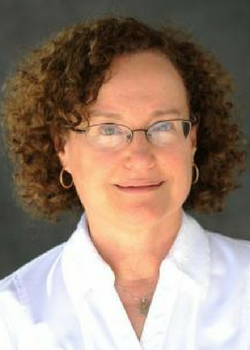Think about a time in your life when you felt excluded or left out of a community or group. Perhaps you excluded yourself, or perhaps others excluded you. Remember your thoughts and your feelings. Did you ask for help? Did you want someone to reach out to you, to stretch out a hand, to bring you back in?
This week we read two parshiot in our Torah: Tazria and Metzora. Among discussions of such things as bodily emissions, skin eruptions, and cloth and house infections, we find the dramatic story of the metzora, the person afflicted with the skin ailment our Torah calls tzara'at. It is a beautiful story, full of decision points and drama, a story of exile and reconciliation that is rich with meaning for our lives today.
Commentators through the ages have debated the exact nature of tzara'at. Some see it as a punishment for transgression, and the metzora, the person afflicted with tzara'at, as a sinner. I'd like to suggest instead that we see the metzora not as a sinner, but as a role model, and the story as a model of communal outreach and reconciliation.
My teacher, Rabbi Joseph Lukinsky of blessed memory, taught us to imagine ourselves in the role of each and every person in the Torah, to try to think what they might have thought and to feel what they might have felt as they lived through the various situations depicted in each parashah. And that is what I'm asking you to do as you read our parshiot this week. Be the metzora, the priest, the family, the community.
The story of the metzora begins when a person sees a skin outbreak and thinks that it might be the affliction called tzara'at. This is a decision point for the metzora. Does he go to the priest for evaluation, or does he cover it up, hoping that no one will notice and that it will go away on its own?
In our story, the metzora himself is brought to the priest, or his situation is brought to the priest's attention. What does this mean? Has he asked for help, or has someone intervened? Whatever the answer, the priest does not make a hasty decision, but examines the metzora at least twice. What is the priest thinking and feeling? He knows that if he declares the skin eruption to be tzara'at, the sufferer must leave the Israelite camp for a period of time. How will this impact the society of the camp? Who will care for his family, and who will perform his work?
When the priest finds that it is indeed tzara'at, the metzora once again does not cover up his situation or sneak out of the camp. He walks through the camp proclaiming, "I am ritually impure! I am ritually impure!" Imagine that you are the metzora walking out of the camp. Each person you pass falls silent and still, and everyone is looking at you. What is happening here? Is this a cruel ritual, in which a sufferer is forced to humiliate himself in public, warning others to keep away from his infectious affliction? Or is it a compassionate ritual, which lets the sufferer say: I must leave the camp, but please don't forget me? In the Babylonian Talmud (Makkot 5a), our rabbis tell us that it is a warning and a plea for help, a request that the community pray on behalf of the metzora.
Once the metzora is out of the camp, our attention shifts to the priest. It is the priest's duty to go out of the camp, to seek out the metzora and to determine if he has healed enough to accompany the priest back into the camp. Imagine now that you are the priest walking out of the camp. What do you feel as go? What comfort will you offer the metzora if he has not healed enough to be welcomed back into the camp?
Our story ends as the priest brings the metzora back into the camp, and assists him through rituals that ensure his safe re-entry into the Israelite community. In a dramatic ritual ceremony, we see that part of the ritual purification of the metzora parallels the ritual of consecrating priests. How do you, the priest, feel as you place the blood of a sacrifice on the metzora's ear, thumb and toe, and you remember your own consecration into the priesthood?
A few weeks ago, we celebrated our Exodus from Egypt and invited all who were hungry or needy to come in and join us as we celebrated our liberation with a Passover seder. Let's remember that feeling of inviting others in as we consider Tazria-Metzora. We know that families and communities are complicated. It is sometimes appropriate to exclude someone temporarily or even permanently. Yet this week's Haftarah teaches us that sometimes it is the ones outside the camp who can see our community, recognize our needs, and even save us.
These rich parshiot, which are so much more than lists of emissions and ailments, challenge us to look at ourselves and our communities and to consider: Who is in and takes it for granted that they are in? Who have we exiled? Who has exiled her/himself? Who is out and asks to come in? Can I be the priest who reaches out and helps others back in?
In these weeks of walking to Mount Sinai, preparing ourselves to receive the Torah on Shavuot, May the Blessed Holy One help us to appreciate our liberation and our ability to heal and to be healed. May we be blessed with the ability to ask for help when we need it, to recognize another's need, and to offer help when we can.
Shabbat shalom.

